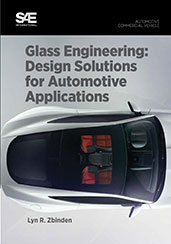Journal Article
Reducing Fuel Consumption on a Heavy-Duty Nonroad Vehicle: Conventional Powertrain Modifications
2023-04-11
2023-01-0466
This investigation focuses on conventional powertrain technologies that provide operational synergy based on customer utilization to reduce fuel consumption for a heavy-duty, nonroad (off-road) material handler. The vehicle of interest is a Pettibone Cary-Lift 204i, with a base weight of 50,000 lbs. and a lift capacity of 20,000 lbs. The conventional powertrain consists of a US Tier 4 Final diesel engine, a non-lockup torque converter, a four-speed powershift automatic transmission, and all-wheel drive. The paper will present a base vehicle energy/fuel consumption breakdown of propulsion, hydraulic and idle distribution based on a representative end-user drive cycle. The baseline vehicle test data was then used to develop a correlated lumped parameter model of the vehicle-powertrain-hydraulic system that can be used to explore technology integration that can reduce fuel consumption.




